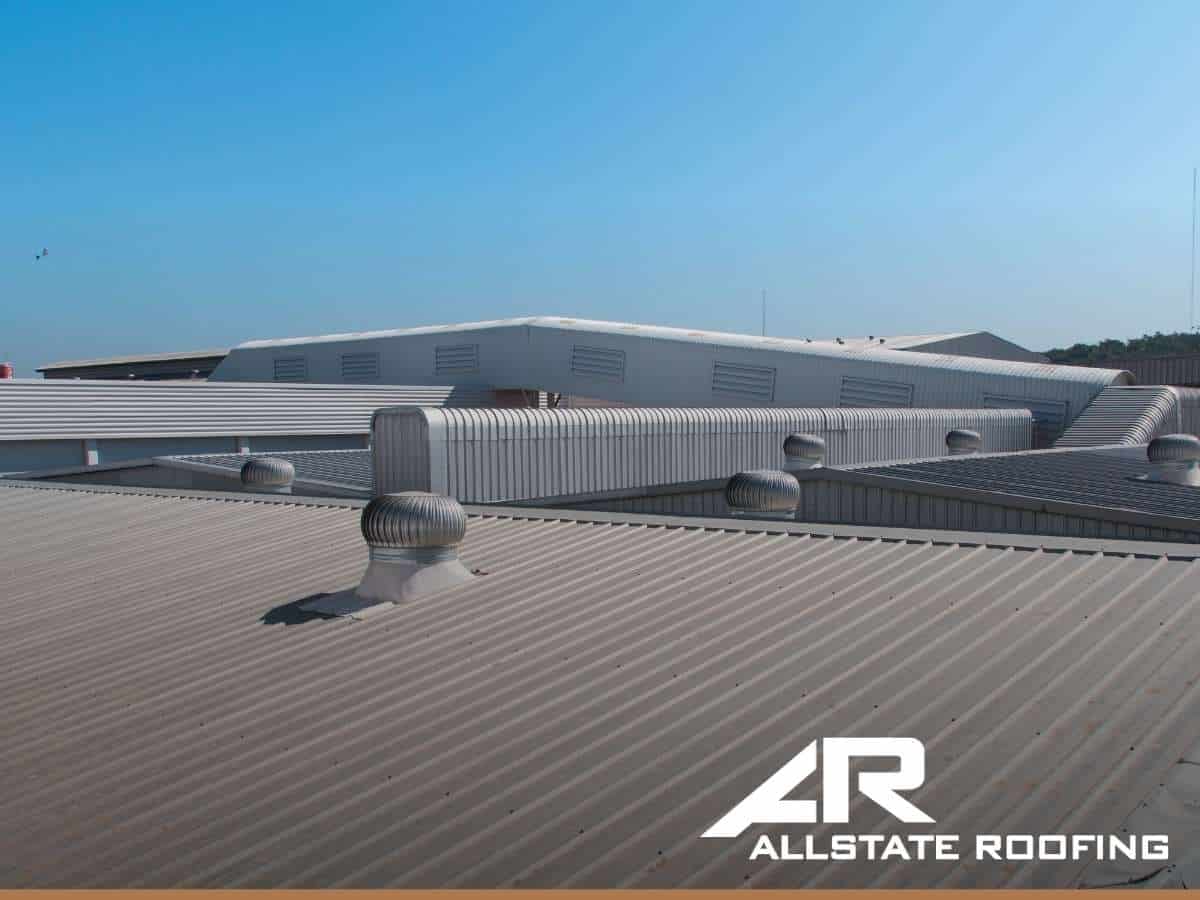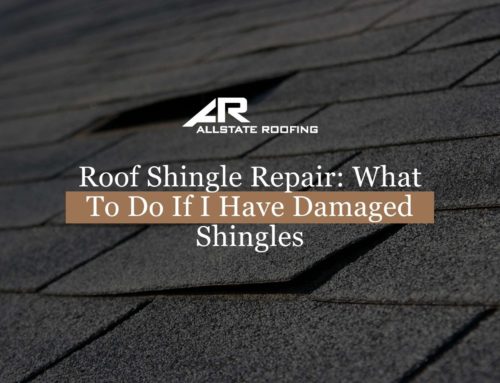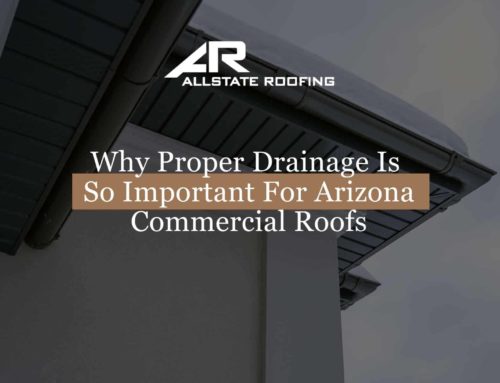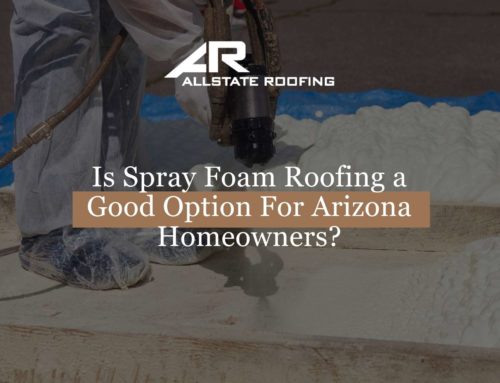How Could Extreme Heat Impact Your Roof?
Preventing Heat Damage: Take Action Before Your Roof Becomes Vulnerable
If you live in a semiarid climate like Arizona, you’re familiar with how extreme heat can disrupt your daily routine. Extreme heat can seriously damage many things, including your roof, leading to structural issues in your home like leaks and costly roof repairs.
But why are roofs so susceptible to heat? And what can you do to prevent serious damage? We’ll explore these questions in more detail below, so keep reading to learn how to protect your home from becoming too vulnerable.

How UV Rays Accelerate Roof Wear & Tear
UV rays constantly bombard your roof, causing significant wear over time. Shingles roofing, tile roofing, and other roofing materials absorb this heat, which deteriorates their protective layers and weakens their structural integrity.
Asphalt shingles are particularly vulnerable to UV exposure as it dries out the oils in the shingles, making them brittle and prone to cracking. This can lead to small fractures that may develop into larger leaks if not addressed promptly.
Clay or concrete tiles can also crack and chip under excessive heat, especially with sudden temperature changes.
All roofing materials are prone to warping over time due to heat exposure, which can distort their shape. This warping creates small gaps where water and debris can seep in, further damaging your home. Once these materials start to crack and warp, roof repairs become inevitable to prevent more severe issues like leaks or insulation failure.
Can Heat Cause Roof Expansion & Contraction?
Heat also leads to other damages to roofing materials, such as expansion and contraction, often referred to as “thermal shock”.
During the day, the heat causes roofing materials to expand as temperatures rise. At night, as temperatures drop, these materials contract. This constant cycle of expansion and contraction can stress the roofing materials, gradually weakening them over time.
This constant cycle of expansion and contraction stresses the roofing materials, leading to their weakening over time.
For example, asphalt shingles expand easily when heated, and that expansion allows them to shift slightly. When temperatures cool at night, these shingles contract, leading to slight gaps. This movement weakens the roof’s structure over time and can even affect the integrity of your structure (whether it’s your house or a commercial building).
It’s crucial to check for these small shifts to prevent leaks, damaged insulation, or the need for urgent roof repairs. Keep in mind that continuous expansion and contraction accelerate wear, especially in Arizona where extreme heat fluctuations are not uncommon.
How High Heat Leads To Roof Water Damage & Leaks
Humidity involves the concentration of water vapor present in the air. As more water evaporates, it increases the humidity. This can severely impact your roof as moisture can easily settle between the shingles, leading to potential water leaks and roof damage.
Mold Damage From Excess Moisture: A Hidden Threat to Your Roof
Following the excess moisture trapped in your roof, there’s another concern for you to worry about, and that’s mold damage.
Mold can cause wood rot, which will destroy a timber roof structure easily if not fixed on time. Depending on the extent of the damage, roof rafters that exhibit signs of degradation due to mold development may need to be repaired or replaced.
If mold has only caused minimal damage to the sheathing, roof rafters, or other roofing timber, a competent roofer may recommend cleaning the wood before painting it with an alcohol-based primer. While this usually kills the mold spores and seals the surface to keep them from spreading, you must still identify and address the source of the moisture problem.
How Extreme Heat Compromises Roof Ventilation & Insulation
Extreme heat can also damage your roof’s ventilation system, leading to more costly roof repairs. It usually impacts your roof vents, which are designed to regulate temperature and airflow in your attic.
Prolonged exposure to high temperatures can warp, crack, or degrade the metal or plastic components in roof vents, compromising their ability to work properly.
When ventilation systems fail, heat becomes trapped in your attic, causing temperatures to skyrocket. This trapped heat can damage your structure’s insulation and increase your energy bills. In essence, without proper ventilation, your roof can be a victim of many damages like moisture buildup and trapped heat.
Protecting Your Roof From Extreme Heat With Regular Maintenance
Regular maintenance is essential to guarantee the good condition of your roof. The best way to guarantee this maintenance is by checking your roof regularly and hiring professional Arizona roofing contractors to receive proper maintenance care when necessary.
Remember that professional roofers do know how to deal with any roofing issue on time because they have the necessary tools and knowledge.
If you need help with your roof or you want to ensure it’s working properly, contact us at Allstate Roofing today!
Allstate Roofing of Arizona
Email: kathy@allstateroofingaz.com
Website: www.allstateroofingaz.com
Peoria Location
30521 N 126th Dr
Peoria, AZ 85383
Office: 602-620-2755
Phoenix Location
2955 W Clarendon Ave
Phoenix, AZ 85017
Office: 602-484-7663
Glendale Location
5019 W Vogel Ave
Glendale, AZ 85302
Office: 602-441-2237

Written by Chad Thomas
“Chad Thomas, born in Arizona and influenced by his licensed roofer father, gained extensive experience in major companies before founding his own licensed roofing business.”






